Something I get asked frequently is, “How do you plan your writing units?” Well, I love teaching writing, but planning for it can certainly be time-consuming! I have to consider state standards, our curriculum, kids’ strengths and needs, and the list goes on.
Fortunately, over time, I’ve come up with a process to make my planning more efficient. So in today’s post, I’ll walk you through the step-by-step method that I use to plan a writing workshop unit. I’ll also share a little freebie to help you organize your own planning!

1. When I sit down to plan a unit, the first thing I think about is what I need to teach. I take the following into consideration:
- The Common Core Standards (replace with your state standards, if necessary)
- My district’s requirements and/or pacing guide
- The reading genre or standards that we will be working on at the same time (I love to have kids reading and writing within the same genre, whenever possible)
Once I’ve taken a look at all of these things, I choose a genre for the unit. I also make a very basic list of “must teach” minilessons that looks something like this:
- Introducing a topic
- Using transition words
- Writing a conclusion
2. After I’ve figured out what I’m going to be teaching in the unit, I choose two authentic writing projects within that genre. I also select an audience for each of those writing projects (although sometimes I allow students to choose a project and audience).
I strive to make each writing project as authentic as possible because having a purpose for writing is extremely motivating for kids. When I notice a child “slacking off,” I can say something like, “Hey, I think you need to pick up the pace – remember that your work needs to be ready to show to Mrs. Smith’s class in two days!” Having an authentic purpose and audience completely eliminated behavioral problems for my students during writing time (except for those extra special cases, of course 🙂 ).
Here are some examples of projects and audiences I’ve used in the past:
- Letters to the principal about ways to improve our school
- Personal narratives to be shared with another class of students
- Nonfiction books to be placed in our classroom library
- A “Welcome To Our School” book for new students
I choose two writing projects, rather than one, because I generally divide up my writing units into two parts (except for my Kindergarten writing units – these are typically briefer). During the first part of a unit, I teach the basics of the genre, and we work on Project 1. Then, I evaluate my students’ progress. During the second part of the unit, I revisit skills they are struggling with, and/or teach more challenging minilessons to take their writing to the next level. The second part (and the entire unit) ends with Project 2.
3. After I’ve chosen on our two projects, I create a kid-appropriate writing sample for each project. This means that I actually sit down and do each final writing project myself – trying to keep in mind what a high-achieving child at that grade level would be able to create. (If you’ve had students do this same writing project in the past, you can also use real student writing samples instead of generating your own. Just be sure to pick writing samples from high-achieving students, because this will help you maintain high expectations for your students’ writing.)
When I’ve finished creating (or finding) these writing samples, I take an in-depth look at them. I ask myself, “What would I have to teach my students in order for them to produce this piece of writing?” I go over each sample very carefully, adding to my original list of minilessons. Here are some examples of these more specific minilesson topics that I might add:
- How to add details by giving examples (for a nonfiction writing project – “All About” books)
- How to show what a character is thinking (for a realistic fiction writing project)
- How to write a greeting to a letter (for a persuasive letter writing project)
- How to describe the setting with adjectives (for a personal narrative writing project)
When I’m making this list, I also think about any related grammar or language arts skills that I can address. In each unit I teach, I include 1-2 minilessons on editing basics. But I also like to tie in additional skills, like using commas (perfect for teaching with a letter-writing project, or a how-to writing project in which students include a list of supplies). Incorporating grammar / language arts concepts into writing gives students a perfect opportunity to work on these skills out in a real context.
4. At this point, I have a more complete list of skills to teach in my minilessons. I take that list and highlight the skills that are the “must haves” for the unit. The “must have” skills are the skills that I want all students to walk away from the unit with – no matter what. All of the “must teach” skills from my original list get highlighted, because they are what the standards require me to teach. I also highlight any grammar/language arts skills that are relevant to the unit, as well as any other skills that I really want all of my students to learn.
Now I have a list of skills, some that are highlighted and some that aren’t. I take the highlighted skills and put them into a list of minilessons for Project 1. The skills that aren’t highlighted go into a list for Project 2. This way, when I teach the first part of the unit (as we work on Project 1), I make sure that I teach those “must have” skills. Then, if kids don’t quite have them down by the second part of the unit, I can go over them again as we work on Project 2.
Now that I have a list of the skills that I want all of my students to learn, I make kid-friendly rubrics and my own checklists for monitoring their progress. I don’t typically include the “bonus” skills that didn’t get highlighted, but I always leave room to make notes about students’ progress in these areas.
5. Next, I outline my minilessons so that they flow logically. For each part of the unit, my sequence looks something like this:
- Lesson 1: Introduce genre and familiarize students with at least one mentor text; explain final project
- Lesson 2: Model how to plan / brainstorm for this genre of writing
- Lessons 3-8: Model various skills needed for drafting this genre of writing
- Lesson 9: Teach a revision skill
- Lesson 10: Teach an editing skill
- Lesson 11: Have students finalize and present project (since I teach primary, students have usually created many different writing pieces, so they may have to choose just one to present for the project)
Most of my units follow this format, although some do vary slightly (particularly my Kindergarten units). After lesson 11 (or whenever we finish Project 1), I evaluate my students’ performance on the first project, and then we go through these same steps as we work on the second project.
Throughout each sequence of lessons, I plan to write “along with” my students. My kids will see me plan, draft, revise, and edit an actual piece of writing – I just do a little bit of work on it each day. I use an interactive white board or document camera so that they can clearly see exactly what I’m writing.
6. After all of this, I’m finally ready to teach the unit! A lot of planning goes into each unit I write, but – I have to confess – I don’t always follow the sequence of minilessons that I’ve so carefully planned out. I actually don’t finalize a day’s minilesson until I have taught the previous day’s lesson and reflected on its success (or lack thereof!). This type of responsive teaching has been really successful with my kids, even though it can be a bit of work. 🙂
Whew! That was a lot of information, so thanks for sticking with me! If you are more of a visual learner, this infographic I created may be helpful for you:
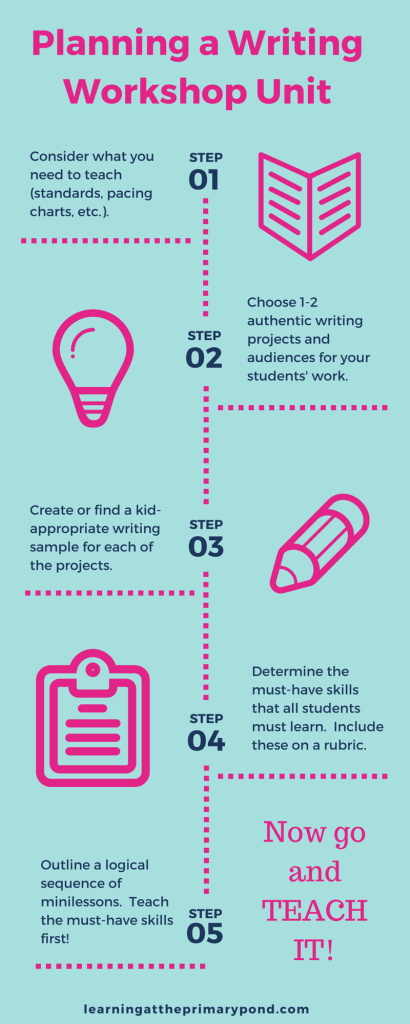
If you’d like to try out a similar process for developing your own writing units, download a free planner by clicking HERE.
Or, if this sounds like a whole bunch of work (spoiler alert: it is!), try out one of my pre-planned writing units for Kindergarten, first grade, or second grade – and skip the planner altogether!
Do you use a similar process when planning your writing units? Or do you prefer to plan differently? Comment below – I’d love to hear from you!

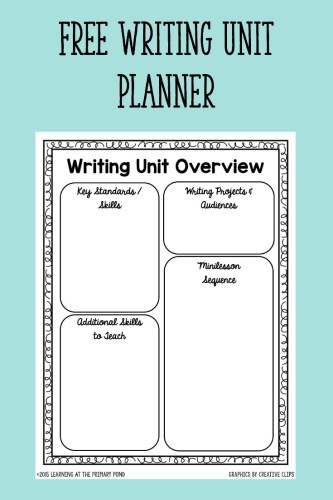
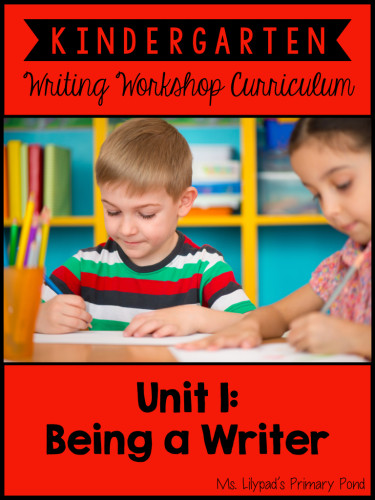
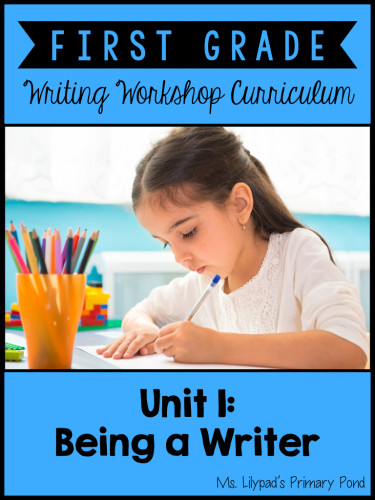
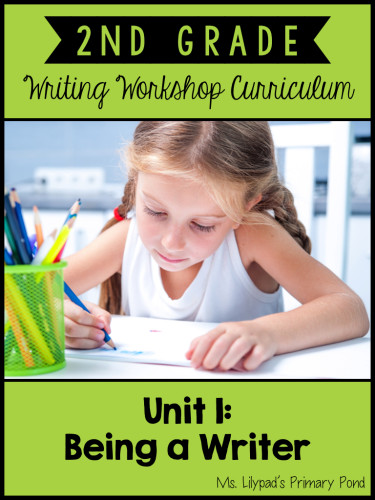

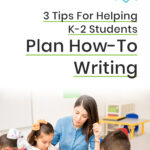
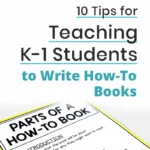
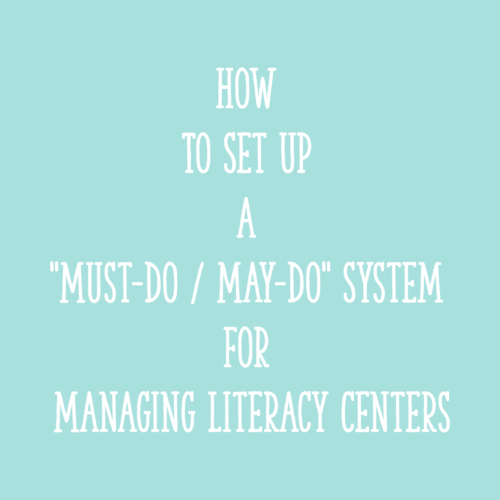
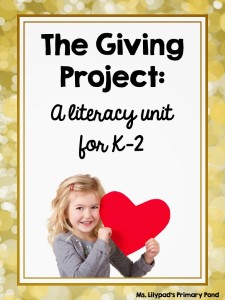
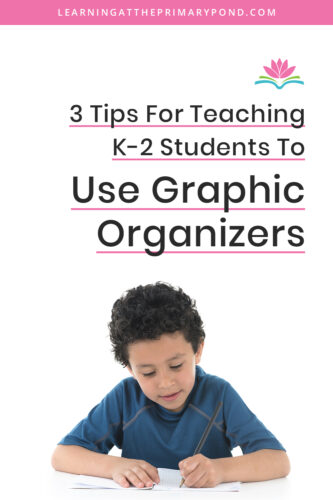






I love and use your 2nd grade unit. I have never felt confident teaching writing and now I do! Thank you so much!!
Traci, that makes me so happy to hear! Thanks for reading and commenting!!
Very interesting – these look great. How do these lessons line up with the Lucy Calkins WW? We have to start that this Fall, so these could be SUPER useful!
Hey there! I’m not 100% sure how well they line up with her units (I haven’t read the newer, grade-specific units). But I do know that my model of teaching writing is pretty similar to hers. Also, a lot of teachers use my units to supplement hers so that have more ready-to-go materials. I hope that helps! Let me know if you have other questions! 🙂
Alison
I recently purchased your kindergarten writing workshop and plan to use it this upcoming school year. Do you start from day 1 with the lessons?
Hi Brittany! Thanks for your purchase! You can definitely start the lessons on the first day, because they are super simple. However, I didn’t usually start them until day 2. If I could get the kids in, feed them, keep them safe, and minimize crying on the first day then I was a happy teacher. 🙂 It was just my personal preference to keep things simple – I’d do whatever you feel most comfortable with. Let me know if there’s anything else I can help with!
Alison
I can use this for third grade writing, right?
Hi there! Yes, you can use this same process for planning a writing unit for third graders. 🙂
Alison
I love your concepts. I have recently completed my student teaching and was looking at ways to demonstrate how I will set up balanced literacy in my future classroom. I printed a copy of your writing overview to add to my teaching portfolio. I plan on using it to explain my plans for writing instruction during my up coming interviews. Thank you!
Hi Judith! So glad it’s been helpful! And congrats on completing your student teaching! 🙂
Alison
Alison, I have to admit that I’ve been procrastinating teaching my daughter enough writing lessons in our homeschool because of lack of confidence. I’ve been researching all about writing workshop, minilessons, etc. trying to get a hold on the overall writing topic. I’ve just been so overwhelmed on how to organize all the information that I’ve collected into some cohesive flow. This post has finally brought it all together for me. I’m now understanding how all the pieces fit into the whole picture. This is going to help me in my planning for our writing lessons, so much! It seems… Read more »
I’m so glad, Tonya! Thanks for your comments and your email!! 🙂
Alison
I am new to your blog and I am loving it. I really appropriate you posting these ideas and can’t wait to implement them. Thank you.
You’re so welcome! Thanks for reading and commenting. 🙂
Alison
Do you have any videos of you teaching writing lessons?
I don’t; sorry Pam!
Alison